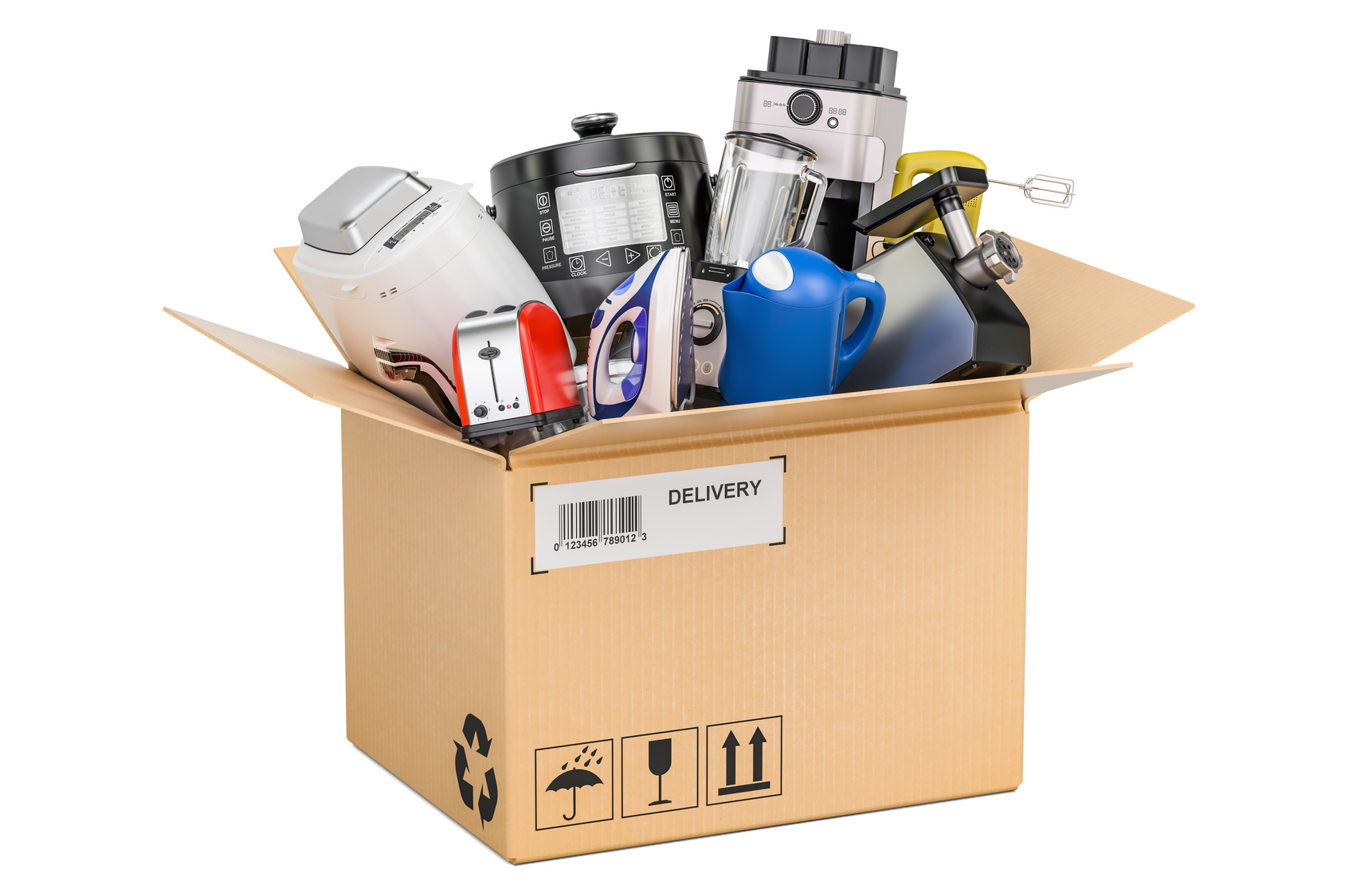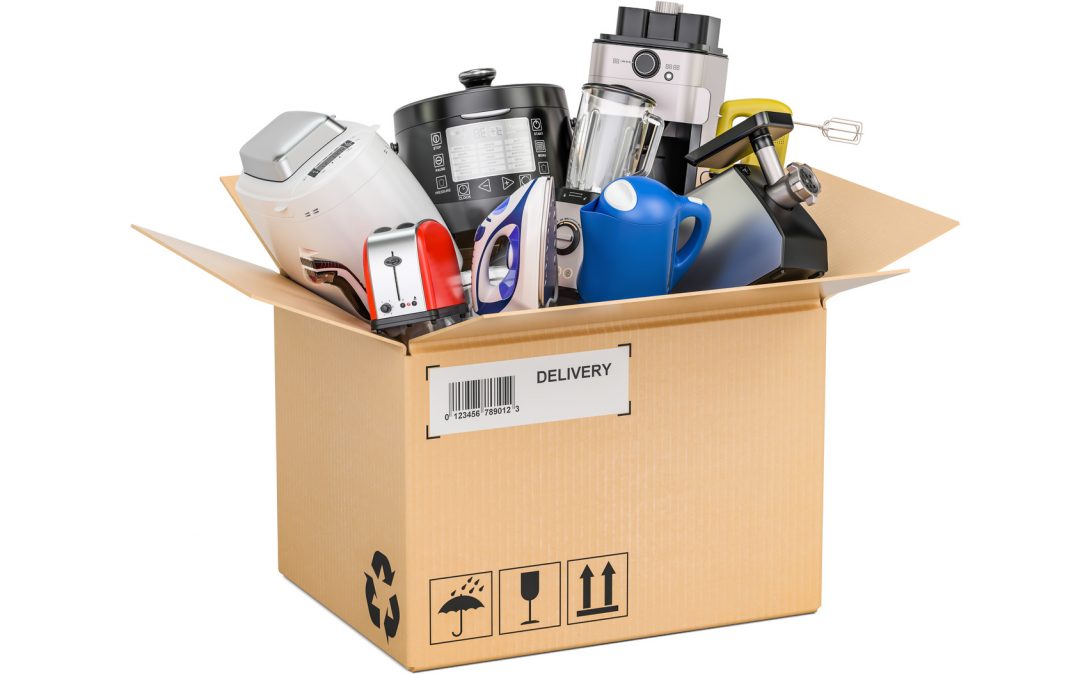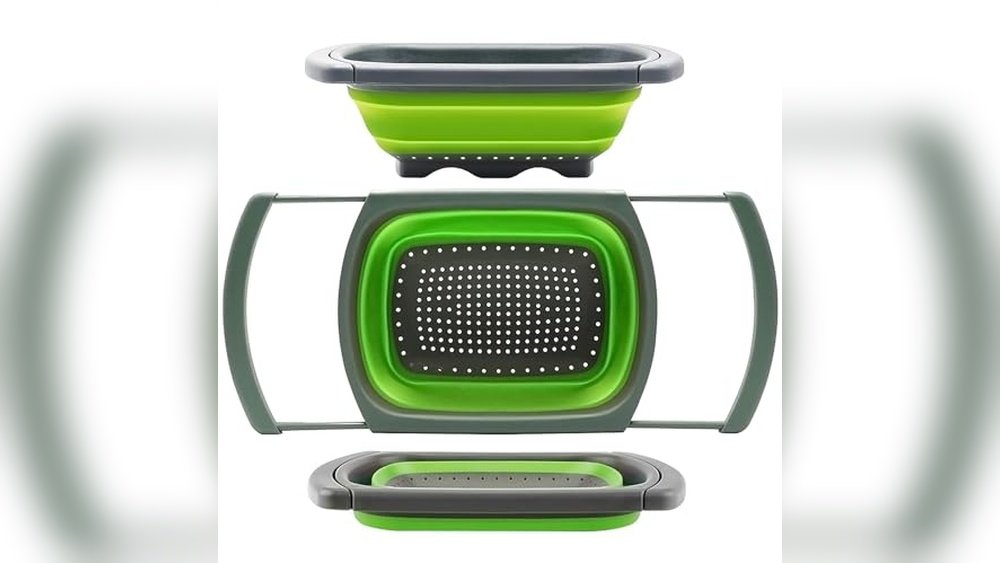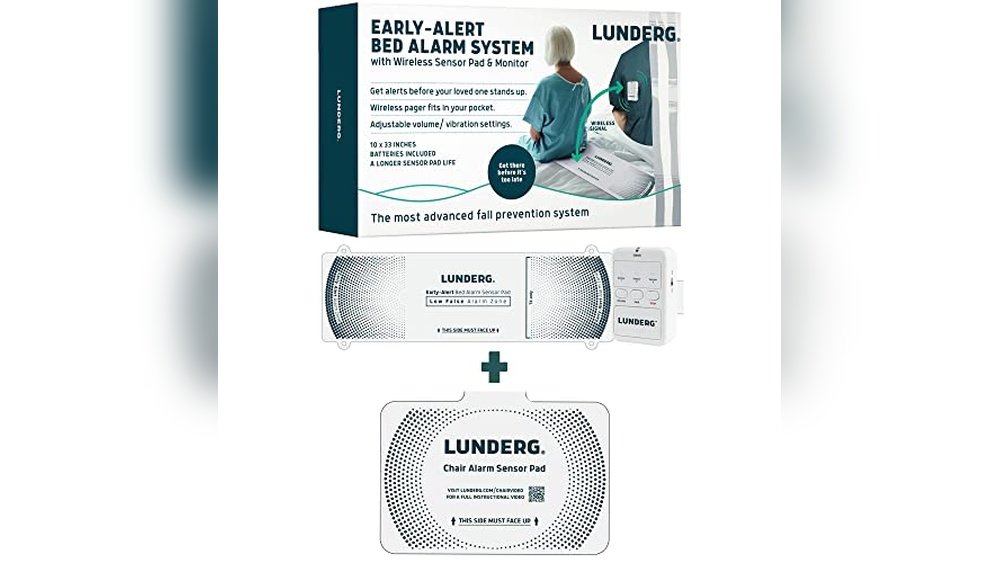Moving can be a daunting task, especially when it comes to packing up your kitchen. Those small appliances you rely on daily – your trusty blender, the coffee maker that kick-starts your mornings, or even your compact microwave – can be tricky to pack without the right know-how.
But here’s the good news: with a few simple steps, you can ensure that your beloved kitchen gadgets make it to your new home in perfect condition. Imagine unpacking in your new kitchen, everything intact and ready for use, without a single scratch or dent.
Sounds like a dream, right? Well, it’s entirely possible. Stick around, and you’ll discover foolproof strategies to pack your small kitchen appliances like a pro, saving you time, stress, and potentially costly damages.
Choosing The Right Packing Materials
Selecting suitable packing materials ensures small kitchen appliances stay safe during a move. Use bubble wrap and sturdy boxes for added protection. Secure cords and detachable parts to avoid damage and loss.
Choosing the right packing materials ensures your small kitchen appliances stay safe. The right materials protect your items from damage during transit. They also make the unpacking process smoother and more efficient. Let’s explore the essential packing supplies and eco-friendly alternatives for a successful move.Essential Packing Supplies
Bubble wrap cushions your appliances from shocks and impacts. It’s perfect for fragile parts like glass lids and knobs. Packing paper fills gaps in boxes and prevents items from shifting. It’s less abrasive than newspapers, avoiding ink stains. Sturdy moving boxes provide a secure shell for your appliances. Choose boxes of various sizes to accommodate different items. Packing tape seals boxes tightly, keeping everything in place. Use a tape dispenser for easy application and efficiency.Eco-friendly Alternatives
Consider using biodegradable packing peanuts. They provide cushioning without harming the environment. Reusable cloth towels or old t-shirts can wrap delicate items. They offer protection and reduce waste. Choose recycled cardboard boxes for a sustainable option. They maintain strength while being eco-conscious. Swap plastic wraps with corrugated cardboard sheets. They protect surfaces from scratches and are recyclable. Using these alternatives helps reduce your carbon footprint during the move.
Credit: www.midwestmoving.com
Preparing Appliances For Packing
Start by unplugging and cleaning each appliance. Wrap cords neatly and secure them. Place smaller appliances in sturdy boxes, using bubble wrap for protection. Ensure all items are snug to prevent movement. Label boxes clearly for easy unpacking in your new kitchen.
Preparing kitchen appliances for packing is crucial for a smooth move. Proper preparation ensures your appliances arrive safely and in good condition. Before packing, cleaning and disassembling are essential steps. These actions help protect the appliances and make packing easier.Cleaning And Drying
Begin by unplugging your appliances. Use a damp cloth to wipe surfaces. Remove any food residue or stains. For stubborn spots, a mild detergent can be used. After cleaning, rinse thoroughly and dry completely. Moisture can cause damage during transit. Ensure every part is dry, especially hard-to-reach areas. A dry appliance is safe from mold and rust.Disassembling Parts
Disassemble removable parts carefully. Check the user manual for guidance. Remove blades, trays, and other detachable items. Smaller parts can be packed separately. This prevents breakage and saves space. Place screws and small components in labeled bags. Keep them organized for easy reassembly later.Wrapping And Securing Appliances
Packing small kitchen appliances for moving involves careful wrapping and securing. Use bubble wrap or towels to protect each item. Place them in sturdy boxes, filling empty spaces with padding to prevent movement.
Packing small kitchen appliances requires care and precision. Proper wrapping and securing keep them safe during the move. This step ensures your appliances stay in perfect condition. Understanding the right techniques is crucial.Using Bubble Wrap And Padding
Bubble wrap provides excellent protection for appliances. Wrap each item completely to cover all surfaces. Use multiple layers for extra safety. Secure the bubble wrap with tape. Padding adds another layer of safety. Use towels or soft cloths to cushion appliances. This prevents any movement inside the box. Ensure padding surrounds the appliance entirely.Protecting Fragile Components
Fragile components need special attention. Remove detachable parts like glass lids or blades. Wrap them individually in bubble wrap. Label these pieces clearly. This avoids confusion during unpacking. Protect sensitive buttons or screens. Use soft padding to cover these areas. Secure them well with tape. This prevents damage during transportation. `
Credit: www.midwestmoving.com
Packing Appliances In Boxes
Packing small kitchen appliances for moving can be a challenge. Proper packing is crucial to prevent damage during transit. Boxes are essential for keeping appliances safe and organized. Let’s explore how to pack these appliances with care.
Choosing The Right Box Size
Select sturdy boxes that fit your appliances snugly. Avoid oversized boxes to prevent shifting. A snug fit keeps appliances stable during the move. Use smaller boxes for heavy appliances. Larger boxes can be for lightweight items.
Layering For Protection
Wrap each appliance in bubble wrap or paper. Layers provide cushioning against bumps and drops. Place a layer of padding at the bottom of the box. This offers a soft base for your appliance. Add more padding around the appliance. Fill any gaps to prevent movement. Top with another layer of padding before sealing.
Labeling And Organizing
Packing small kitchen appliances for moving requires careful labeling and organizing. Use sturdy boxes and bubble wrap for protection. Clearly mark each box with its contents and destination room. This ensures quick unpacking and reduces the risk of damage.
Moving can be a stressful experience. Packing small kitchen appliances requires careful planning. Labeling and organizing are vital steps. They ensure everything reaches the new home safely. Proper labeling prevents confusion. It saves time during unpacking. Clear organization helps identify items. It keeps everything in order.Labeling Boxes Clearly
Label each box with clear, bold writing. Use permanent markers for durability. Indicate the contents of each box. Write “Kitchen Appliances” on boxes containing such items. Include the room where the box belongs. This helps movers place boxes correctly. Use color-coded labels. Different colors for different rooms. This makes identification easy.Creating An Inventory List
Create an inventory list for your appliances. Write down each item as you pack. Keep the list simple and concise. Include the condition of each appliance. Note any damages or issues. This helps in case of loss or damage. Keep the list with you during the move. Cross-check it at your new home. Ensure all items are accounted for. This list is a handy reference during unpacking.
Credit: www.youtube.com
Loading And Transporting Safely
Moving can be a challenging task, especially with small kitchen appliances. Their fragile nature demands special care. Ensuring they are loaded and transported safely is crucial. Proper packing prevents damage and ensures smooth transitions. This section focuses on loading and transporting safely. Follow these steps to keep your appliances secure.
Loading Boxes Properly
Choose sturdy boxes for your appliances. They provide solid protection. Use bubble wrap or foam padding inside. These materials cushion your items during transport. Place heavier appliances at the bottom. This method prevents crushing lighter items. Fill empty spaces with packing paper. This stops items from shifting.
Label each box with its contents. This helps identify appliances easily. Mark boxes as ‘fragile’ for extra caution. This alerts movers to handle with care. Tape boxes securely to avoid accidental opening. A well-packed box ensures safety.
Securing Appliances In Transit
Position boxes securely in the moving vehicle. Avoid stacking them too high. This minimizes the risk of toppling over. Use straps or ropes to hold boxes in place. This prevents shifting during transit.
Keep appliances away from heavy furniture. This avoids potential damage from collisions. Ensure balanced weight distribution. It promotes stability during the journey. Check the vehicle before departure. Make sure everything is tightly secured. These steps ensure appliances arrive safely.
Unpacking And Setting Up Appliances
Unpacking and setting up small kitchen appliances is a crucial step. It ensures your kitchen is functional after a move. Proper unpacking prevents damage and makes the setup process smooth. Here’s how to unpack your appliances carefully and check them for damages.
Unpacking With Care
Begin by placing each box on a flat surface. Open the boxes gently to avoid damaging the contents. Remove one item at a time to maintain order. Use scissors to cut through the tape without applying pressure on the box.
As you unpack, keep the original packaging nearby. This helps if you need to store or transport items again. Ensure you handle each appliance with care. Fragile items need extra attention during unpacking.
Checking For Damages
Once unpacked, inspect each appliance for any visible damage. Check cords, plugs, and any detachable parts. Look for cracks or dents on the surface. Ensure all parts are in place before plugging in.
If you find any damage, contact the moving company immediately. Document damages with photos for evidence. This helps resolve issues efficiently. Testing appliances ensures they work correctly before using them.
After checking, clean each appliance thoroughly. This removes dust collected during transit. Setting up clean appliances enhances their performance in your new kitchen.
Frequently Asked Questions
How Do I Prepare Appliances For Moving?
Start by cleaning and drying each appliance. Remove any detachable parts and pack them separately. Secure cords with twist ties or tape. Use original packaging if available, or wrap items in bubble wrap. Place them in sturdy boxes with padding to prevent movement.
Label each box for easy unpacking.
What Packing Materials Should I Use?
Use bubble wrap, packing paper, and sturdy boxes. Original packaging is ideal if available. Ensure boxes are not too large to avoid shifting. Use packing tape to secure boxes tightly. Label boxes with contents and handling instructions. Fragile stickers can help ensure careful handling during the move.
Can I Pack Appliances In Their Original Boxes?
Yes, using original boxes is ideal for packing appliances. They fit perfectly and often include protective inserts. If unavailable, use similar-sized boxes with padding. Ensure the appliance is secure and doesn’t move inside the box. This method provides the best protection during transportation and minimizes damage risks.
How To Pack A Blender For Moving?
First, disassemble the blender and wrap each part in bubble wrap. Secure with tape to prevent unwrapping. Place the wrapped parts in a sturdy box with extra padding. Ensure the box is not too large to avoid shifting. Label the box as fragile for careful handling during the move.
Conclusion
Packing small kitchen appliances doesn’t have to be stressful. With the right steps, it becomes simple. Gather sturdy boxes and quality packing materials. Wrap each appliance securely to prevent damage. Label boxes clearly for easy unpacking. These small actions make moving smoother.
Protecting your appliances saves money and time. Preparing well avoids confusion later. Stay organized and calm during the move. A little planning goes a long way in ensuring everything arrives safely. Happy moving!



